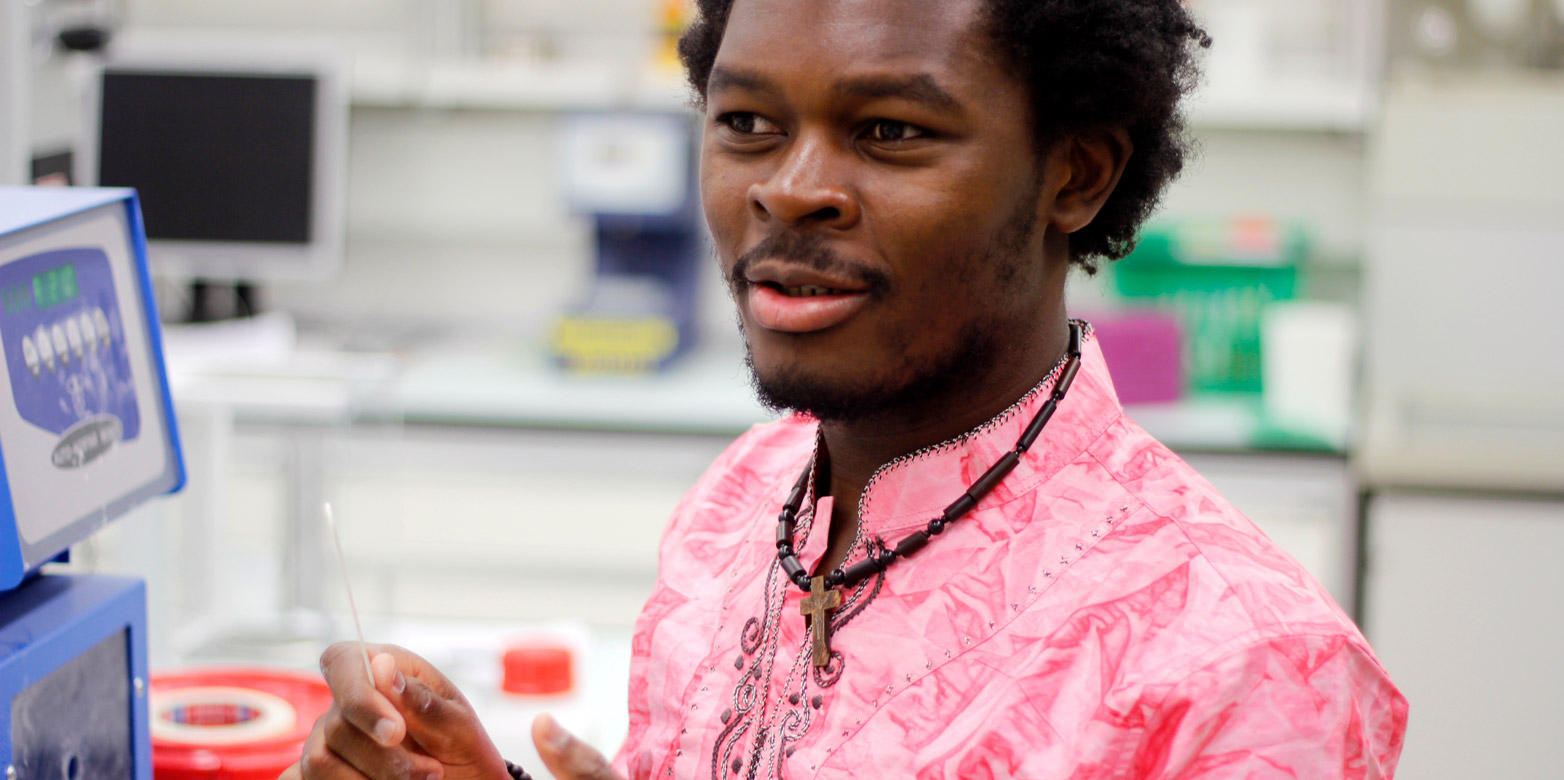How Gnanli Landrou is closing the cycle
He grew up in a clay house in West Africa. With his ETH spin-off Oxara, Gnanli Landrou is now developing a cement-free concrete made from clay-based excavation material. His goal is to help Africa and the rest of the world build affordable, sustainable houses.

A gentle handshake, a friendly smile and a kind, keen look on his face: meet Gnanli Landrou. “I have been enormously lucky in life, and I wish to give some of that luck back,” the 29-year-old from Togo explains. His firm determination leaves no room for doubt: this young man will follow through with his plans. According to Forbes, he is one of Europe’s 30 most influential entrepreneurs under the age of 30 this year.
“My Vision is to enable access to dignified, healthy, affordable housing in Africa and other regions,” Landrou continues. To understand what motivates the young materials scientist, we must take a look at his life story.
An impressive journey
Landrou’s story started in Togo, where he grew up sharing a clay house with his parents and siblings. Later, he was fortunate enough to spend some of his childhood living with his uncle, a migrant labourer. As they travelled through West Africa together, Landrou learned to till the soil and build clay houses. At the age of 16, his life took a fateful turn: his parents helped him travel to France, where he stayed with family friends in Marseille.
His host family sent Landrou to a local school, where his scientific talent did not go unnoticed by a teacher. With his help, Landrou caught up on two years’ worth of lost work at the primary level. Many others supported him on his journey through the French educational system. After completing his baccalaureate, he embarked on a degree in materials science at the University of Limoges.
The best of both worlds
During his studies, Landrou researched the challenges facing the global construction industry: the energy- and CO2-intensive production of cement, the dwindling supplies of construction grade sand and gravel, and the high cost of concrete, which is simply unaffordable in many countries. His experience had already taught him that traditional clay brick construction is a laborious, time-consuming process, and he knew that adequate housing was still lacking in his home country. UN Habitat, the United Nations Human Settlement Programme, estimates that the African continent will need millions of new, affordable homes and thousands of schools and hospitals by 2050.
Landrou points out an important oversight, “When people build a house in this country, they first dig a hole and dispose of the excavated soil. Afterwards, they bring in tonnes of sand, gravel and cement to pour in the foundation and walls.” However, clay is an ideal construction material in and of itself, and it tends to be readily available right where it is needed. Why not combine the technologies of both cultures? That idea brought Landrou to ETH Zurich in early 2014, where he completed his doctorate at the Chair of Sustainable Construction.
Investigating soil-based architecture
“Once again, I was very lucky,” comments Landrou on his time as a doctoral student at ETH, where he found a supportive environment and an inspiring mentor in Professor Guillaume Habert. Together, they developed a process to turn clay-based excavation material into an alternative concrete without the addition of cement.
Landrou’s soil-based concrete can be poured while fresh; it hardens rapidly and is suitable for building floors and non-load-bearing walls. Its processing resembles that of conventional concrete and it uses a similar infrastructure. “Our technology gives clay construction nearly all the processing benefits of cement, while being about 2.5 times cheaper and 20 times more environmentally friendly,” explains Landrou. The market potential for non-structural building elements is considerable: the volume in Switzerland alone is estimated to be worth around about CHF 700 million.
Business model: Building with dirt
To enter this market, Landrou patented his technology after completing his doctorate. Since autumn 2018, he has been working on his spin-off Oxara. “We still haven’t decided whether we will licence the process to construction recycling companies that want to transform their excavation material into a valuable resource, or whether we will simply sell the mineral additives required for the soil-based concrete,” says the young entrepreneur. ETH Zurich awarded Landrou a Pioneer Fellowship to support him during the development phase. He is receiving CHF 150,000 in start-up assistance and access to the offices and laboratories of the University to turn his business idea into reality.
Giving back
Soil, clay, manual labour. Besides science, Landrou enjoys the simple things in life. He spends his free time as a reggae and dub DJ, and loves cycling in nature. Whenever he can, he offers a helping hand to new African students who are still finding their bearings in Zurich. To this end, he and like-minded friends launched the African Student Association of Zurich (ASAZ) in 2015.
Landrou used his first doctoral salary to travel back to Togo after eight years away to visit his family. He is proud to be paying his siblings’ school fees now. But, it’s not money that motivates him. In addition to making the local construction industry more sustainable, his main goal with Oxara is to solve the lack of affordable housing on his home continent. We all hope that he manages to close the cycle.
Comments
No comments yet